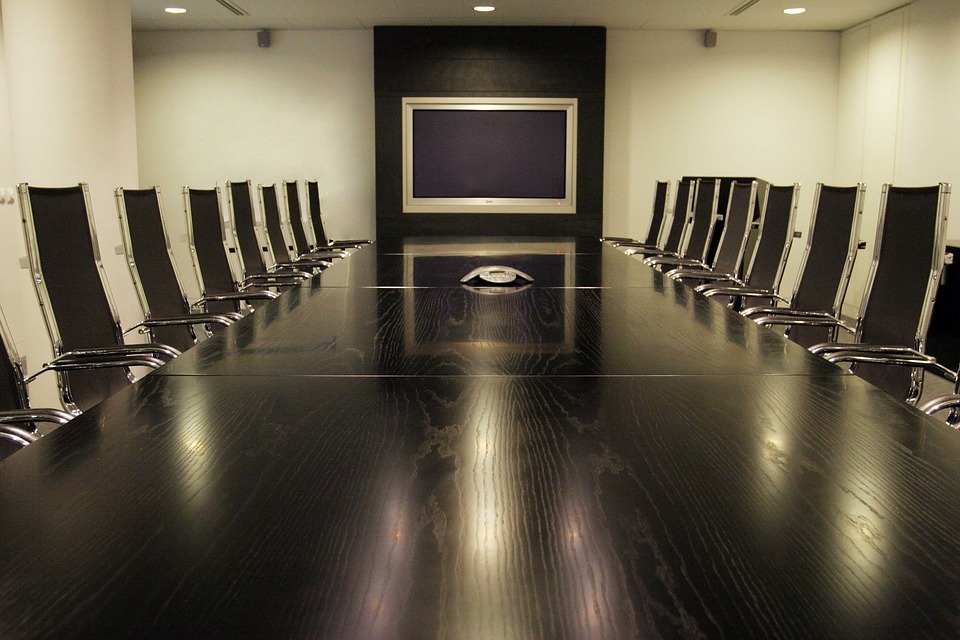Growth is a priority for every business. But a clear dichotomy is present between expectation and reality. For some businesses, growth occurs throughout the duration of their existence; for others, all their efforts go to waste and they gradually phase out, making way for fast-moving startups in the industry.

Why is that? Well, the answer depends on numerous factors, but at its core is the concept of innovation vs. stagnation. If your team is preoccupied with putting out fires (hopefully those fires are not as big as the ones in “Backdraft” and “Only the Brave”) and making the company run on-track, then they will hardly have time left over to focus on core business activities and implement innovation accordingly.
This means your team is rejecting any fresh ideas that come their way and dooming your company to regurgitating the same service and products for customers. Unfortunately, these customers are interested in something new.
Where do meeting rooms fit into all this?

A report by Crowd Companies mentions how various business leaders encounter obstacles to innovation, such as conflicting agendas, company culture, and inaction or resistance. What they need is a space where their best and brightest can swap ideas, collaborate, test and share concepts, design programs and products, and devise prototypes.
Such spaces go beyond the makeup of your average meeting rooms. They require innovative technology to foster innovative thinking and contribute to the rise of tech as well as new ways of executing ideas successfully.
Contrary to popular belief, this kind of innovation-fueling space is accessible to both established businesses and startups. This is the perfect area for employees to embrace new ideas, and take creative decisions and risks.
Converting meeting rooms
Businesses are slowly modifying meeting rooms to support more than just a well-planned meeting. They are inviting — and even inspiring — the active exchange of ideas since the technology is advanced and the spaces are enticing. But the truth is, the way you handle the meeting depends on the objectives and structure of your industry.
A place to draw inspiration from would be to take a look at what other companies are doing with their “think spaces.” Remember, when you choose the right kind of technology for the workplace, it leads to growth, creative problem-solving, and most importantly, innovation that organizations demand from the future and the present. If you’re interested to know more about the right technology, check out some examples below:
Wall-mounted displays

Every meeting room should have a wall-mounted display so that information can visibly be shared with all the attendees and they can interact with it. This means they no longer have to huddle around a single screen or look at printed copies of the presentation to understand what is going on. Large displays make the content all-accessible.
Based on the required functionality, this kind of content sharing can either be wireless or wired. And, if you’re thoughtful enough to add A/V connectivity to the room, the displays will connect attendees through video conferencing, too.
Whiteboards/interactive displays
This is another crucial piece of technology that is useful in converting an ordinary meeting room into a field of innovation. Instead of exchanging numerous emails to arrive at the desired answer, interactive displays enable you to bring people together and draft the best solution together.
Such displays and smart whiteboards are awesome if you want your workers to produce content and ideas together, which you can then share digitally to continue the flow of information even when the meeting is over.
Internet connectivity
Meeting rooms should be hooked up to a WiFi connection, but you need to keep an eye on the speed of the Internet as well as the load that can be handled by the venue when different meetings are going on at the same time. It is for this reason that meeting rooms should consider a dedicated WiFi capacity for every event so that each of them achieves the capacity and quality they require.
Although it is necessary for venues to provide a strong WiFi network at an affordable rate, meeting rooms should raise awareness regarding the expense of the service at different levels, and then include the details at the start of the think space inspection process.
Conference applications
A lot of meeting rooms have conference apps installed in them, and even though the technology fosters communication, the popularity of this technology among businesses may be waning due to the demand for high broadband applications.
Technology that fosters communication between the attendees and the host is still relevant in meeting rooms in the contemporary business setting. When you provide the attendees a chance to communicate directly, you get a better sense of their interests and preferences. You can use this type of information to implement trends that are most impactful for your attendees’ personal experience.
Data security

Businesses need to protect their data at all costs (we have all seen “Blackhat” and “24”), and that applies to the information exchanged in the think spaces as well. They must implement proper measures to prevent leaks and ensure that no outsiders can listen in on the discussion taking place in the meeting room at any given time.
Remote technology
Nowadays, meetings involve collaboration between remote and onsite team members. So it is vital for a business to invest in collaboration technology and tools that make it possible for their employees to synthesize thoughts and share ideas on their computers and mobile devices.
This includes solutions and software like Zoom and Cisco WebEx, which are meant for online meetings and webinars. You can use these for getting remote guests or employees to connect to the ongoing meeting, thereby saving both time and travel expenses.
Organizations interested in adapting to the evolving work landscape can set such goals easily but may have trouble visualizing how. To truly perceive the advantages of a technology-enabled workspace, you need to consider real-world examples and implement it bit by bit into the structure of your own business.
Discussions with a purpose
Gone are the days when meeting rooms where nothing more than spaces where business discussions would take place. Now, the discussions have a purpose and that purpose is innovation. Implementing the right technological advancements in the meeting room can help you innovate services and products, and stay relevant in the industry.
Photo credit: Pixabay



